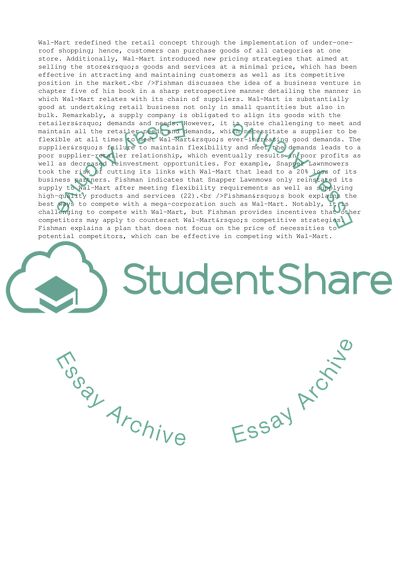Cite this document
(Analysis of Wal-Mart Effect by Charles Fishman Book Report/Review Example | Topics and Well Written Essays - 1750 words, n.d.)
Analysis of Wal-Mart Effect by Charles Fishman Book Report/Review Example | Topics and Well Written Essays - 1750 words. https://studentshare.org/management/1862114-reading-reponse-based-on-the-book-the-walmart-effect
Analysis of Wal-Mart Effect by Charles Fishman Book Report/Review Example | Topics and Well Written Essays - 1750 words. https://studentshare.org/management/1862114-reading-reponse-based-on-the-book-the-walmart-effect
(Analysis of Wal-Mart Effect by Charles Fishman Book Report/Review Example | Topics and Well Written Essays - 1750 Words)
Analysis of Wal-Mart Effect by Charles Fishman Book Report/Review Example | Topics and Well Written Essays - 1750 Words. https://studentshare.org/management/1862114-reading-reponse-based-on-the-book-the-walmart-effect.
Analysis of Wal-Mart Effect by Charles Fishman Book Report/Review Example | Topics and Well Written Essays - 1750 Words. https://studentshare.org/management/1862114-reading-reponse-based-on-the-book-the-walmart-effect.
“Analysis of Wal-Mart Effect by Charles Fishman Book Report/Review Example | Topics and Well Written Essays - 1750 Words”. https://studentshare.org/management/1862114-reading-reponse-based-on-the-book-the-walmart-effect.


